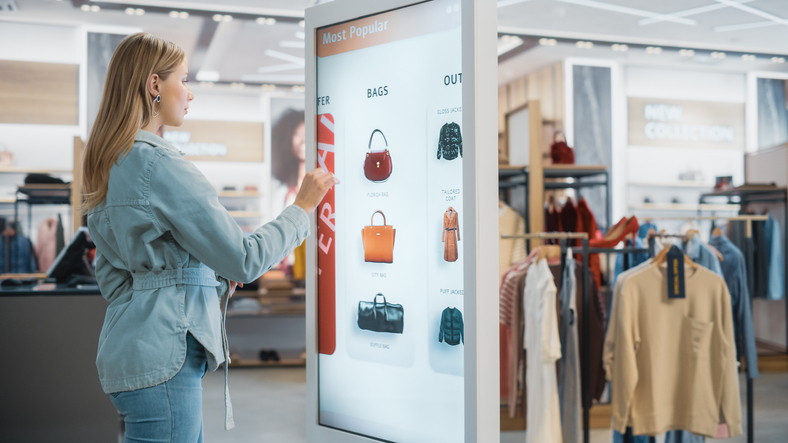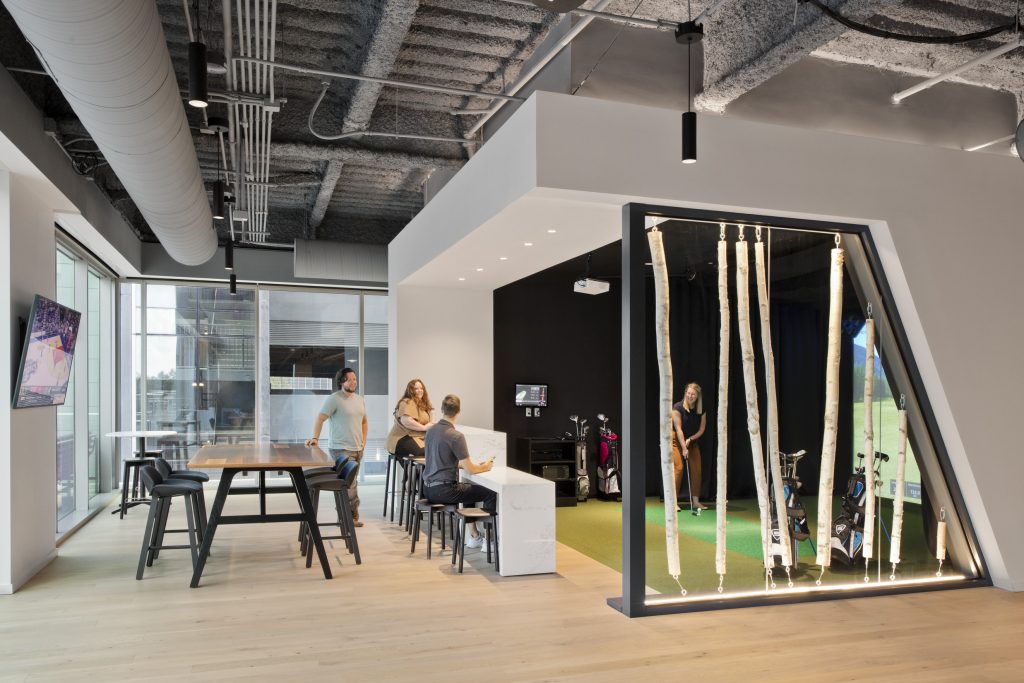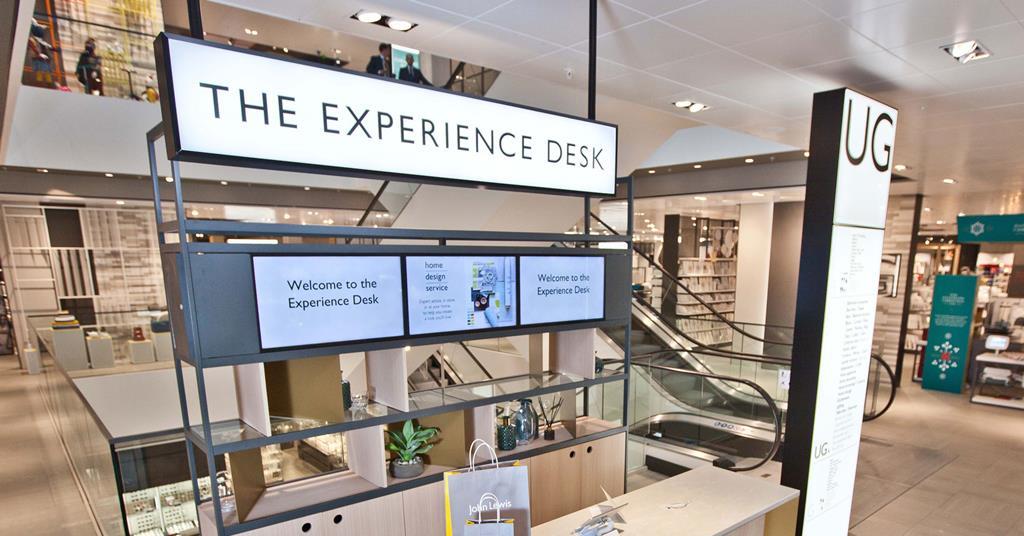SmithGroup’s Kerri McShea shares five “phygital” retail strategies that can transform workplace design, blending physical and digital experiences to boost collaboration, personalization, and employee engagement in hybrid work environments.
In today’s hybrid world, the line between physical and digital experiences isn’t just blurred—it’s being reimagined. Retail has been at the forefront of this shift by transforming traditional shopping into a unified multi-channel experience that deepens brand engagement, delivers real-time information, and builds lasting loyalty. Through “phygital experiences,” retailers have evolved their physical spaces to integrate digital touchpoints with in-person engagement.

We’ve all likely experienced some version of this integrated in-person-meets-online experience—such as shopping in-store while checking online reviews or ordering online and opting to pick up from the store to see an item in real life before committing. The fact of the matter is we no longer rely on any singular mode of shopping. And just as customer expectations have shifted, so too have those of employees.
Every day, we are immersed in both the physical and digital worlds. Indeed, it is challenging, if not impossible, for most of us to work without any digital tools or internet access. And like the retail store, the purpose of the physical workplace has evolved. It’s no longer just a place to complete tasks; it’s a place for connection, collaboration, and culture. But this physical connection shouldn’t come at the expense of the digital connectivity we’ve come to expect. Like retail customers, employees now expect frictionless digital integration, instant access and meaningful, personalized experiences.
By borrowing from retail’s playbook, organizations have an opportunity to redesign the workplace into a vibrant, hybrid ecosystem. Here are five ways workplace design can take cues from phygital retail to create spaces that are not only functional, but also meaningful.
Experience Blending
Retail effectively blends digital and physical experiences by integrating online and in-person touchpoints. The workplace can incorporate this concept by embedding technologies that bridge the gap between in-person and virtual experiences. Examples include integrating near-field communications (NFC) or QR tags throughout the workplace to unlock and share content when tapped by a phone. This content can be informative (how to use the space) or engaging (tell a joke of the day). To truly create a memorable experience, these codes can be treated as a treasure hunt of sorts that encourages exploration, incentivizes movement and increases in-person interactions throughout the space. Even better if the location and content of these codes change over time.
Another opportunity to create more workplace phygital experiences is to incorporate technology that allows for seamless connections between a device (laptop/tablet/phone), AV equipment and digital displays with the touch of a button. Imagine bumping into a colleague
in the hallway and the conversation leads to a problem you have been trying to solve. You walk over to a nearby digital screen and cast or pull up visual content with the ease of sharing your screen on Teams or Zoom. You may even invite a virtual colleague to join the conversation, too.

Individually Personalized
What if technology predicted what you needed before you did? Just as Amazon recommends your next purchase based on past purchases, the workplace could learn your patterns and behaviors and offer suggestions to streamline and enhance your in-office experience. Technology could act as a digital concierge that anticipates the needs of the user through sensors and device location. One can imagine a future where these sensors can be used to create a customized experience with digital signage and display content, recommendations for where to sit/work based on teammate location, and how to start the day based on one’s calendar events and individual preferences.
Going a step further, this AI-powered concierge/assistant can prompt you for your lunch order and make recommendations for scheduling a coffee meet up with a colleague you haven’t seen in a while.

Fully Immersed
Retail store design has evolved from simply shopping—in fact, in some stores you cannot actually make a physical purchase—to creating an experience that evokes emotion and forges a deeper connection between the consumer and the brand. The workplace can take inspiration by infusing meaningful aspects of the company’s brand throughout the space through storytelling, architecture, and experiences that are authentic to the organization and its culture. To create richer experiences, these interactions can be multisensory and activate not only one’s vision, touch and sound, but also smell and even taste. To the extent possible, these elements and experiences should be consistent across a company’s network of physical and digital spaces to create a unified experience.

The Art of the Surprise
Retail has also mastered the art of surprise and curiosity by featuring a rotating collection of products and incorporating phygital pop-up experiences. The office can adopt this strategy by regularly switching up furniture settings and incorporating pop-up spaces that might feature art, retail products, hands-on activities or community events. Enticed by the variety of experiences, employees will be drawn to the workplace not by mandates but by curiosity and delight.

Data Mining
With technology infused in the shopping experience, retailers have been able to collect rich data on customer shopping habits, preferences and patterns. Similarly, data can be collected in the workplace from sensors and NFCs to track how employees move through and engage with the space. Key performance data can reveal insights on how to evolve and continually improve the office to enhance the user experience and optimize the value of the workplace.

Workplace design can draw inspiration from retail’s phygital prowess by blending physical and digital experiences to meet evolving employee expectations. Just as retailers create seamless, engaging environments that integrate online and in-person touchpoints, workplaces can enhance the employee experience by adopting similar strategies. From personalized digital interactions and immersive brand storytelling to surprise elements and data-driven insights, the future workplace can become a dynamic space that fosters collaboration, connection, productivity and delight.
images courtesy of SmithGroup


